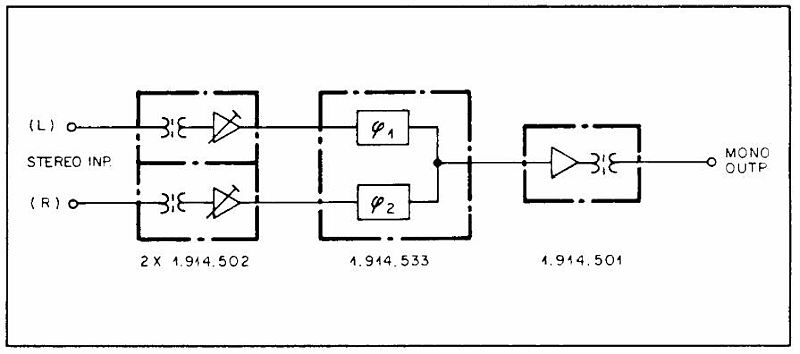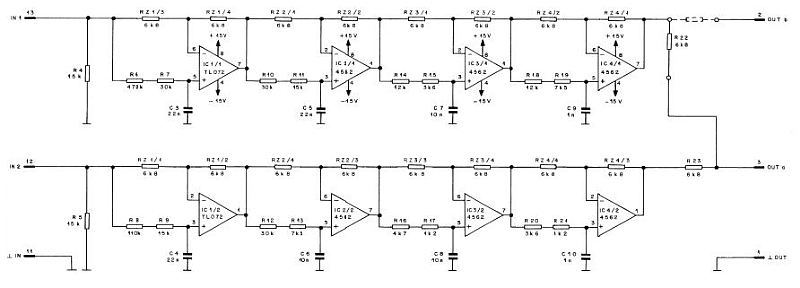I've always wondered if the Studer "90 degree filter" would be useful during tracking or mixdown to solve the problem of synths not properly folding down to mono.
This thread at Gearspace is one example "Mix Elements Half Disappear in Mono":
https://gearspace.com/board/so-much-gea ... oting.html
Over at PRW "Improving Mono Fold Down":
https://www.tapatalk.com/groups/proreco ... 09763.html
And at GroupDIY: "Allpass for decorrelating L/R?":
https://groupdiy.com/threads/allpass-fo ... ost-796469
At GroupDIY I found sims:
"In phase" response:
 "Out-of-phase" response.
"Out-of-phase" response.

So it appears that the Studer 90 degree filter makes mono, which would normally sum at +6 dB, fold into the mix at about -3 dB.
Completely "out-of-phase" polarity-inverted mix elements, which would normally disappear in mono, now fold-in to mono at about -9 dB.
The question I had was "Would the Studer 90 degree filter solve the problem of synth's not properly folding down to mono?"
This has been on my "bucket list" so I built one and the answer appears to be a qualified "yes."
Though I wouldn't recommend it to correct a mix I did try it on the Stone's "Sympathy for the Devil" and it restored the piano during the intro which almost completely disappears in mono.
On a problematic synth sample posted at Gearspace it brought forward an upper string part and gave it a little more sheen.
In mono that part was more subdued and dark.
I need more samples and the time to critically listen to them.
One way to use the 90 degree filter would be to insert it between the keyboard and console during tracking.
The outputs could be left in stereo to improve downstream mono compatibility and left wide (wider) during tracking or folded down to mono in the filter, recorded in mono and then panned in the mix.
Another potential application, if you're into it, is mastering "elevator" background music.
Studer designed it for AM broadcasting.
With mono sine wave wave inputs an X-Y goniometer displays an almost perfect circle - mono music appears like a Brillo pad.
The 90 degree filter can also me used in reverse by making mono into "pseudo-stereo."
If the synth part is wide to begin with it will be, if recorded in stereo, even wider.
Folded down to mono the processed version has less tonal changes than the unprocessed version.
If there's interest, or when I get time, I'll record a couple of samples.
If this does prove to be a tool it will be one that might be used infrequently and only in very problematic situations.





